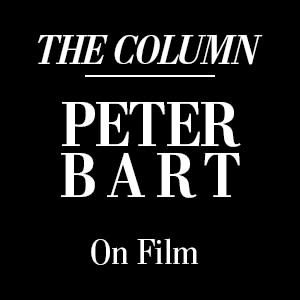Peter Bart: Will Hollywood’s Cutbacks Inhibit The Comebacks? We’re Nearing The Moment Of Truth


The news of the moment keeps veering between cutbacks and comebacks. Keep your shrink on hold.
Paramount is laying off thousands and closing its TV studio, but Skydance’s David Ellison, its new owner, promises that an important new slate is on its way. Disney is shedding employees as park attendance sags, but also is investing billions in new theme park attractions and even a solid entertainment slate (Bob Iger calls it a “turbocharge”).
More from Deadline
List Of Hollywood & Media Layoffs So Far In 2024: From Paramount To Warner Bros Discovery To CNN
Edgar Bronfman Jr. Preparing Bid For Paramount Global - Report
Even battle-scarred United Artists with Scott Stuber as its new savior promises yet another comeback after alternate decades of brilliance and disaster.
Given all this, the ongoing drama surrounding Warner Bros Discovery’s David Zaslav seems downright comforting.
I take more than an academic interest in all this since I’ve personally been enmeshed in both ups and downs (the “ups” at ’70s Paramount were more memorable).
And it was Tom Cruise who, having just become chief of UA, told me, “This will be a death-defying experience, won’t it?” (He was correct; I had been a predecessor in that problematic job.)
Hollywood seems to covet its periods of turbulence, and even encourage them. In the 1920s the actress-entrepreneur Mary Pickford couldn’t digest the budget overages of her partner at UA, D.W. Griffith. To “steady” her company, she invited a succession of quixotic showmen including Howard Hughes, Charlie Chaplin and a cowboy star named William S. Hart to join the cause; Hart was the first to quit. Her company foundered, and Griffith’s The Birth of a Nation was blatantly racist.
A big question of the moment is whether Hollywood’s cutbacks will inhibit the comebacks. We’re nearing the moment of truth.
Paramount is stripping down to its core and faces a year of federal and banking constraints before it can unleash its ambitious plans. Stuber, the former movie chief at Netflix, has to thread his way through a corporate maze of brands at Amazon MGM while launching takeoff.
There is agreement on this: The key trigger of a renaissance would be a hit picture. But of what genre?
Ellison’s executive experience led to becoming a partner in franchise films like Top Gun: Maverick. Stuber’s pre-Netflix early career also was with big-budget action (Battleship, Volcano). Disney’s upcoming slate of films is heavy on sequels and prequels, like Frozen 3 and Toy Story 5. Its new park plans include newly reinvented Avatar and Frozen lands.
RELATED: Disney Still No. 1 In Theme Park Attendance, But Chinese Operator Coming On Strong
A glimpse of past studio comebacks, however, points to a range of genres and directions. Paramount’s resurgence in the late ’60s and ’70s was propelled by modestly budgeted films such as Love Story or Rosemary’s Baby. Even The Godfather represented a mere $7 million budget and was based on a then-obscure novel.
Sherry Lansing steered a remarkable recovery at Paramount in the mid-‘80s based on hits including Fatal Attraction, The Accused and Indecent Proposal – all of which generated major female followings. She understood her audience.
During UA’s second heyday under Arthur Krim and David Picker, the big titles included Tom Jones and One Flew Over the Cuckoo’s Nest – again unique but modest in cost.
Too be sure, this route held its traps. Cruise and Paula Wagner’s stint at UA offered thoughtful adult films that failed to find audiences: Lions for Lambs with Robert Redford and Valkyrie with Cruise himself. He later was grateful to return to his Mission: Impossible franchise.
No one knows where the future hits may reside, but I once wrote a book titled Boffo that suggested this common denominator: The big hits of the past, big or small, reflected a singular voice.
It was usually from the wilderness.
Best of Deadline
Sign up for Deadline's Newsletter. For the latest news, follow us on Facebook, Twitter, and Instagram.

 Yahoo Lifestyle
Yahoo Lifestyle 